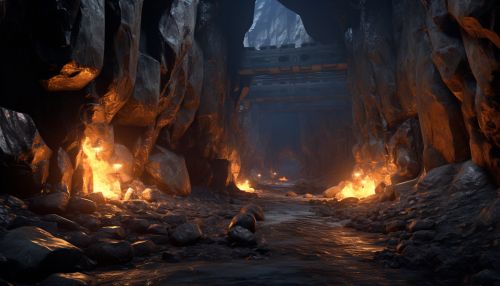Geological storage
Introduction
Geological storage, also known as geological sequestration, refers to the long-term storage of substances, typically carbon dioxide (CO2) or nuclear waste, in underground geological formations. The process is a key component of carbon capture and storage (CCS), a technology aimed at reducing greenhouse gas emissions.


Geological Formations Suitable for Storage
Geological formations suitable for storage typically have a porous reservoir rock, such as sandstone or limestone, overlaid by a non-porous cap rock, such as shale or anhydrite, which prevents the stored substance from migrating to the surface. The selection of suitable sites for geological storage involves a comprehensive evaluation of the geological characteristics and properties of potential storage formations and their overlying seals.
Types of Geological Storage
There are three main types of geological storage: oil and gas reservoirs, deep saline formations, and unmineable coal seams.
Oil and Gas Reservoirs
Oil and gas reservoirs have been used for decades for the storage of natural gas, and more recently for the storage of CO2. These reservoirs are well-characterized and their behavior under injection of fluids is well-understood. The storage of CO2 in oil and gas reservoirs can also enhance oil or gas recovery, providing an economic incentive for CO2 storage.
Deep Saline Formations
Deep saline formations, which are layers of porous rock filled with brine, are considered to have the largest storage potential. These formations are typically located at depths greater than 800 meters, where the pressure and temperature conditions keep CO2 in a dense phase, which enhances storage efficiency.
Unmineable Coal Seams
Unmineable coal seams can also be used for CO2 storage. The CO2 is adsorbed onto the coal surface, displacing methane, which can be captured and used. This process is known as enhanced coal bed methane recovery.
Storage Mechanisms
There are four main mechanisms that trap the CO2 in the storage formation: structural and stratigraphic trapping, residual gas trapping, dissolution trapping, and mineral trapping.
Structural and Stratigraphic Trapping
Structural and stratigraphic trapping is the primary trapping mechanism. It relies on the physical barriers, such as the cap rock, that prevent the upward migration of CO2.
Residual Gas Trapping
Residual gas trapping occurs when CO2 is immobilized in the pore spaces of the reservoir rock due to capillary forces. This mechanism is effective in the short term.
Dissolution Trapping
Dissolution trapping occurs when CO2 dissolves in the formation water. The denser CO2-saturated water sinks, enhancing the storage security.
Mineral Trapping
Mineral trapping is the most secure and long-term storage mechanism. It occurs when CO2 reacts with the formation minerals, forming stable carbonate minerals.
Monitoring and Verification
Monitoring and verification are essential components of geological storage projects. They ensure that the stored CO2 remains trapped in the storage formation and does not leak to the surface or into underground sources of drinking water. Monitoring techniques include seismic monitoring, well monitoring, and surface monitoring.
Risks and Mitigation
While geological storage is considered a safe and effective method for reducing greenhouse gas emissions, it is not without risks. These include the potential for leakage of stored CO2, induced seismicity, and degradation of underground sources of drinking water. Risk mitigation strategies include careful site selection, comprehensive monitoring and verification, and the development of remediation plans.
Conclusion
Geological storage offers a promising solution for reducing greenhouse gas emissions and managing nuclear waste. However, its successful implementation requires a thorough understanding of the geological formations suitable for storage, the storage mechanisms, and the potential risks and their mitigation.
